In a world of polished canvases and gallery gloss, Elina Marquez—known as @deathlili on Instagram—builds her art from ballpoint pens, prison aesthetics, and the weight of cultural memory. Through recurring themes like clown face paint, lowrider-inspired fashion, and visual nods to gang iconography and kink subcultures, Elina creates space for the often overlooked: alternative Latinx voices, particularly those who feel estranged within their own communities. Deathlili’s art is part diary, part declaration and entirely hers.
KB: Thank you for taking the time to speak with us today! Lets start with a introduction— who are you?
EM: My name is Elina Marquez— but most know me as Lili. I’m born and raised here in Arizona, Mesa specifically.
KB: What is your current medium of art?
EM: I work primarily with ink — ballpoint, archival inks, micron pens. I also dabble in charcoal and graphite, but my main focus is ink work.

KB: How would you define your artistic voice, and what sets your work apart?
EM: a lot of my work comes from feeling like there was never a space for me. That quickly became the realization that there are many others that feel similarly—specifically alternative Chicanos. Through that, I speak not only for myself, but others who can’t always express themselves due to obstacles they may be facing. Whether that’s fear of judgment or the lack of acceptance within our households. Even if you’re unable to express yourself freely, I hope my art gives people a feeling of being seen.
KB: What emotions or reactions do you hope to evoke with your art?
EM: I don’t necessarily strive to evoke a specific emotion, but a reaction I get often that I find very flattering is nostalgia. There are a lot of nostalgic themes, as well as my style itself, that are carried throughout my work. My stickers, for example, are heavily inspired by early 90s and 2000s quarter machines. My ballpoint pieces are often reminiscent of prison art. The T-shirts I make are printed on pro clubs. All of that is a part of mine as well as many others’ upbringing and culture. Aside from my own personal gratification, it’s one of the many rewarding parts of creating for me.
KB: Do you see your creative process as intuitive or intentional?
EM: The ideas are intuitive, but the process is very intentional. I’m a perfectionist when it comes to laying down lines or shading. So, it’s a mix of both.
KB: Are there any reoccurring visual motifs that hold deeper meaning for you?
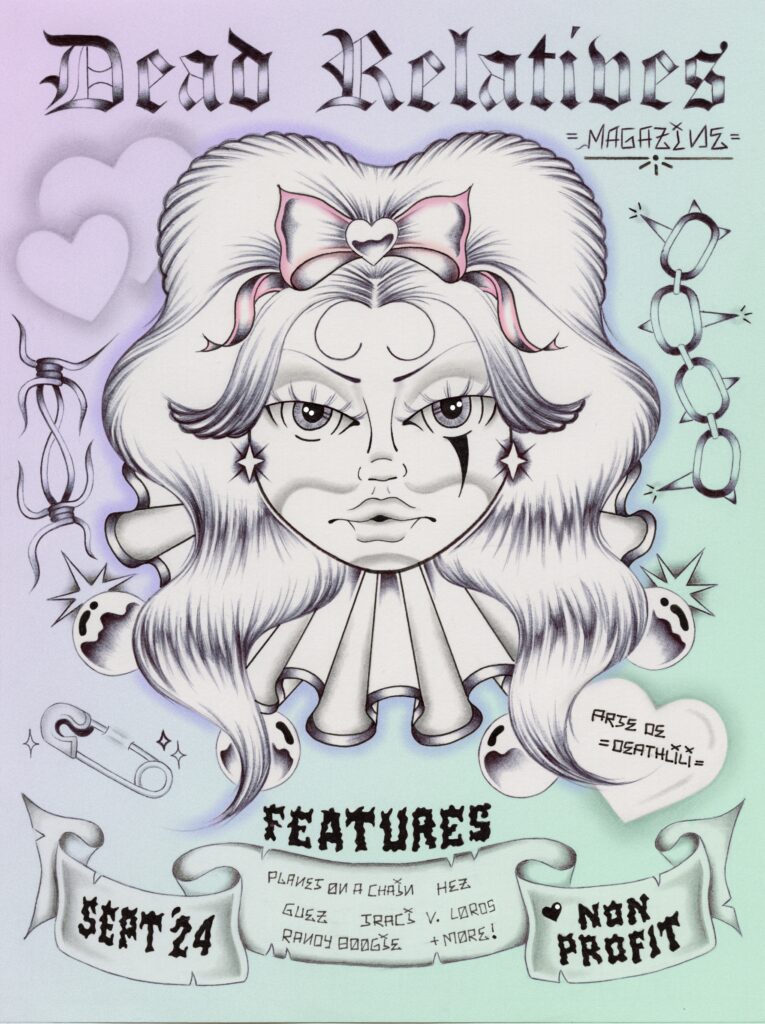
EM: My use of symbolism throughout my work expresses cultural identity and societal resistance, alongside more modern takes on traditional fine line Chicano artwork. A few recurring visual motifs would be sad clowns. Sad clowns are often characterized by cyclothymic temperament—encouraging the creation of lighthearted humor despite inner turmoil, which is something I resonate with personally. I have clown paint tattooed under my left eye, and that’s another way I represent myself in my pieces.
KB:What are some of your strongest personal, historic, or cultural influences?
EM: One of the strongest personal influences would be my dad. He’s the reason I began drawing, and I’m super thankful to have had my creativity encouraged and supported by both my parents growing up and even to this day. Then, of course, the Chicano culture in its entirety—from our music to our fashion and even gang culture. My pieces encompass all that we are and beyond, which is where I begin to introduce the more alternative influences, such as heavier music and elements from the kink and fetish community, as seen in some of my other pieces.
KB: What’s it like having that level of support at home?
EM: I’m super thankful. There are a lot of times within Latino households or most people of color where we struggle with having that acceptance—wanting to dress a certain way or listening to certain music. I’m super thankful that my parents have always pushed me to be unapologetically myself.
KB: Can you recall a moment, artistic or otherwise, that radically shifted how you approach creativity?
EM: In 2017, I almost lost my eyesight, which greatly impacted my approach to life but especially my art. Since then, I do my best to avoid contemplating ideas and just act on them. I try to take full advantage of my time here as well as my artistry. I’m grateful to have regained my eyesight. While I do deal with permanent vision damage, it pushed me to work harder refining the skills that I do have. The extra time and attention to detail due to my flawed vision has honestly improved my quality of work. It’s unfortunate that this happened to me, but it’s part of life. Part of that is living through experiences and lessons. It’s all about perspective, so that’s how I try to view it in a positive way.
KB: Has that motivated you to go harder, or has it been debilitating?
EM: It depends. It can be debilitating at times. I wear my glasses, but that only does so much. I try to view things in a different perspective, and it definitely did push me harder to start acting on my ideas. Not wait to do it later. I work harder to refine the skills that I do have and to sit down and pay attention to deeper detail.
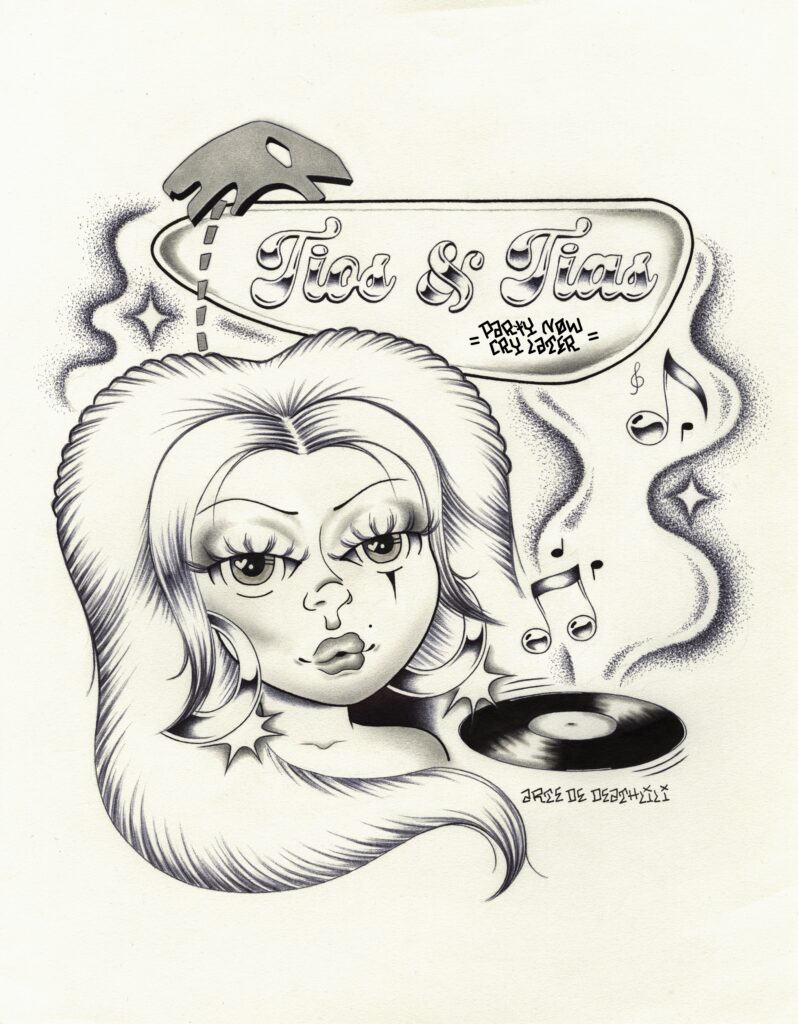
KB: Are there any artists, writers, philosophers, or even politicians who have deeply influenced your outlook or aesthetic?
EM: There’s an artist that really inspires me both artistically and on a personal level. Her name is Selena Ruiz. She is a makeup artist from Riverside, California. She’s very established and known on Instagram as @anythingforselenaaassss. I recall discovering her work ten years ago and, at that time, feeling the exact way that I would hope for my art to make others feel. Someone so unapologetically authentic within themselves. It was and forever will be inspiring to see someone from a similar background culturally make an impact as strong as she has in our community. I’m honored to share a space as an artist with such a genuine and resilient person.
KB: Do you see your work as a form of emotional processing, like therapy?
EM: Definitely. Oftentimes, my art stems from my own mental and emotional struggles. It’s most definitely a therapeutic form of expression. My subjects aren’t always a direct translation of that. Just the act of creating something aids in a lot of my processing and healing. I can look at a piece and recall exactly what I was experiencing at that time. Some people journal—mine just happens to be visual. I express myself best visually. As far as others, I can’t say what my art does for them on a deeper level, but I hope whatever they feel is something that can resonate through all. Another reason why I choose to leave my own personal feelings out of the involvement—leaving the piece more open for interpretation.
KB: How has your art evolved as you’ve grown personally, mentally, and emotionally?
EM: That’s kind of hard to say. That was a question that kind of stumped me. As far as evolving, the best thing that I could say is evolving from a skill perspective. To piggyback off the impaired vision, it’s just working through that and working harder to refine the skills that I have and learn new ones.
KB: Have you ever created something that taught you something about yourself?
EM: I tend to work on the slower side due to my vision issue, but there have been instances where really amazing opportunities have presented themselves with limited time. I’ve been able to complete full-size concepts in as little as four days—that’s brainstorming included. It’s really amazing that I’m able to accomplish something of that expectation outside of my place of comfortability.
KB: How do you balance personal storytelling with public visibility and interpretation?
EM: Because my art comes from that personal place, I purposely leave my emotions and reasoning out, allowing for open interpretation. I’m a very private person, so it’s never been something that’s difficult for me to accomplish.
KB: What kind of legacy or cultural impact do you hope your art leaves behind?
EM: What’s most important to me is the impact I leave on my community. I’m working to bridge the gap between the Chicano community and those living an alternative lifestyle. The crossover of subcultures is something that I felt was underrepresented in my city until recently. The inadequate representation of other like-minded individuals propels me further into creating art that represents us. We’re more than the common misconception of lowriding, gang culture, and baggy clothing. We too enjoy a darker side of life alongside heavier music.
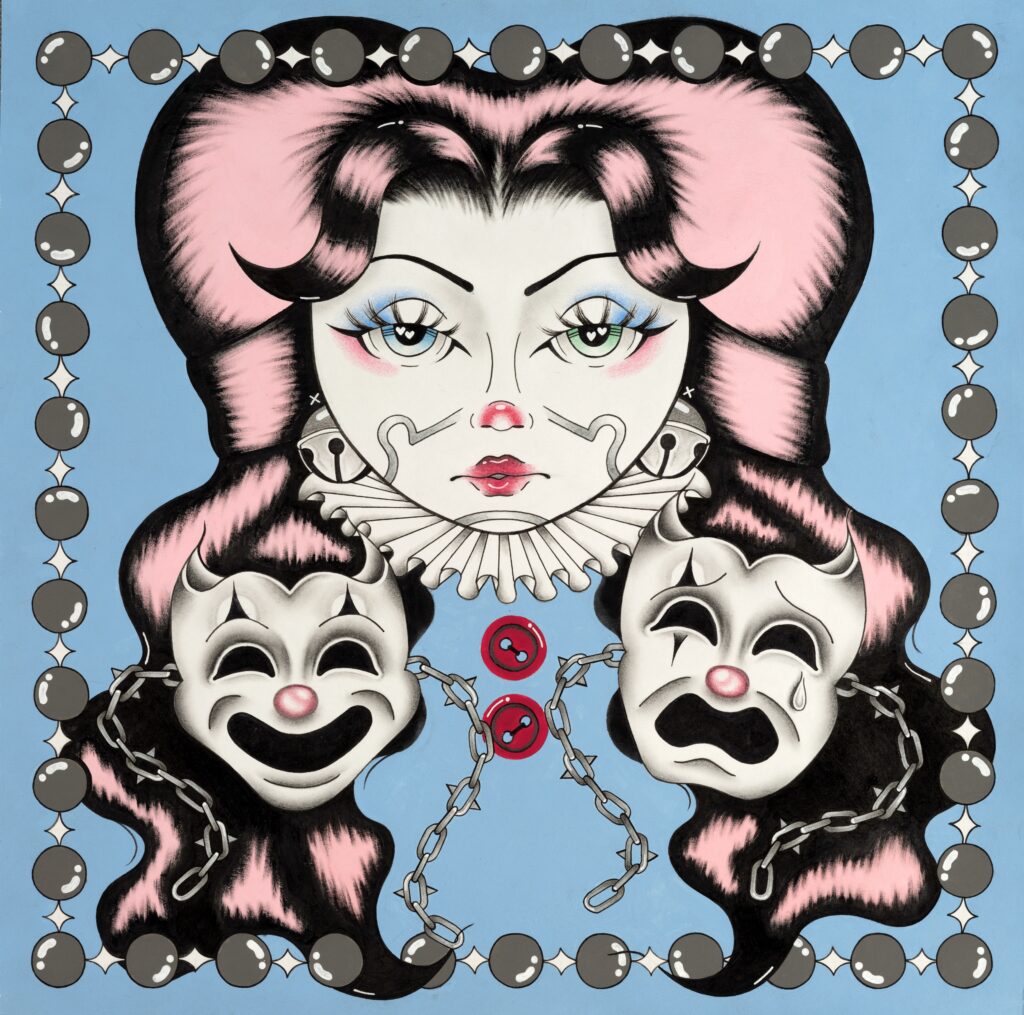
KB: where do you see your art heading in the next two, five, or even ten years?
EM: Within this year, actually—hopefully if all plays out as planned—I anticipate having my own solo show. It’s something I’ve never done. I’ve always done shows in other states. I just recently was part of a show here in my own home state, which is kind of funny because this is my home. I’m hoping by the end of this year to do a solo show—not only revolving around me and my work, but creating a space where I can bring in other creative friends, whether that be tattooers, food vendors, DJs, and just create a space where we can all come together, have fun, share art, and hopefully make a little bit of money. For five and ten years, I’ll put those into the same category of goals. I anticipate creating a lot more merch. I’ve been working on a lot of that lately—new clothing, new keychains, different things. I’ve been trying to get as many commissions as I can under my belt. I’m kind of picky about who I work with, and I tend to work best with musicians, so that’s something I anticipate doing down the line.
KB: Elina, it was great getting to sit with you today and discuss the impact your making in the art world- Before we wrap, is there anyone you’d like to shout out or any message you’d like to leave readers with?
EM: I That would be Angel on Instagram, @angelvisionsss. She’s one of my good friends and has been an immense amount of support and love and guidance through my artistic journey. So shout out to Angel.
Whether it’s a sticker that feels pulled from a dusty 2001 capsule machine or a ballpoint piece inked with precision and pressure, Deathlili’s work stays rooted in real experience. As Elina moves toward her first solo show and continues building with care—through custom tees, chrome-dipped keychains, and handpicked collaborations—she’s doing more than creating. She’s curating a world where her community can finally see itself reflected.

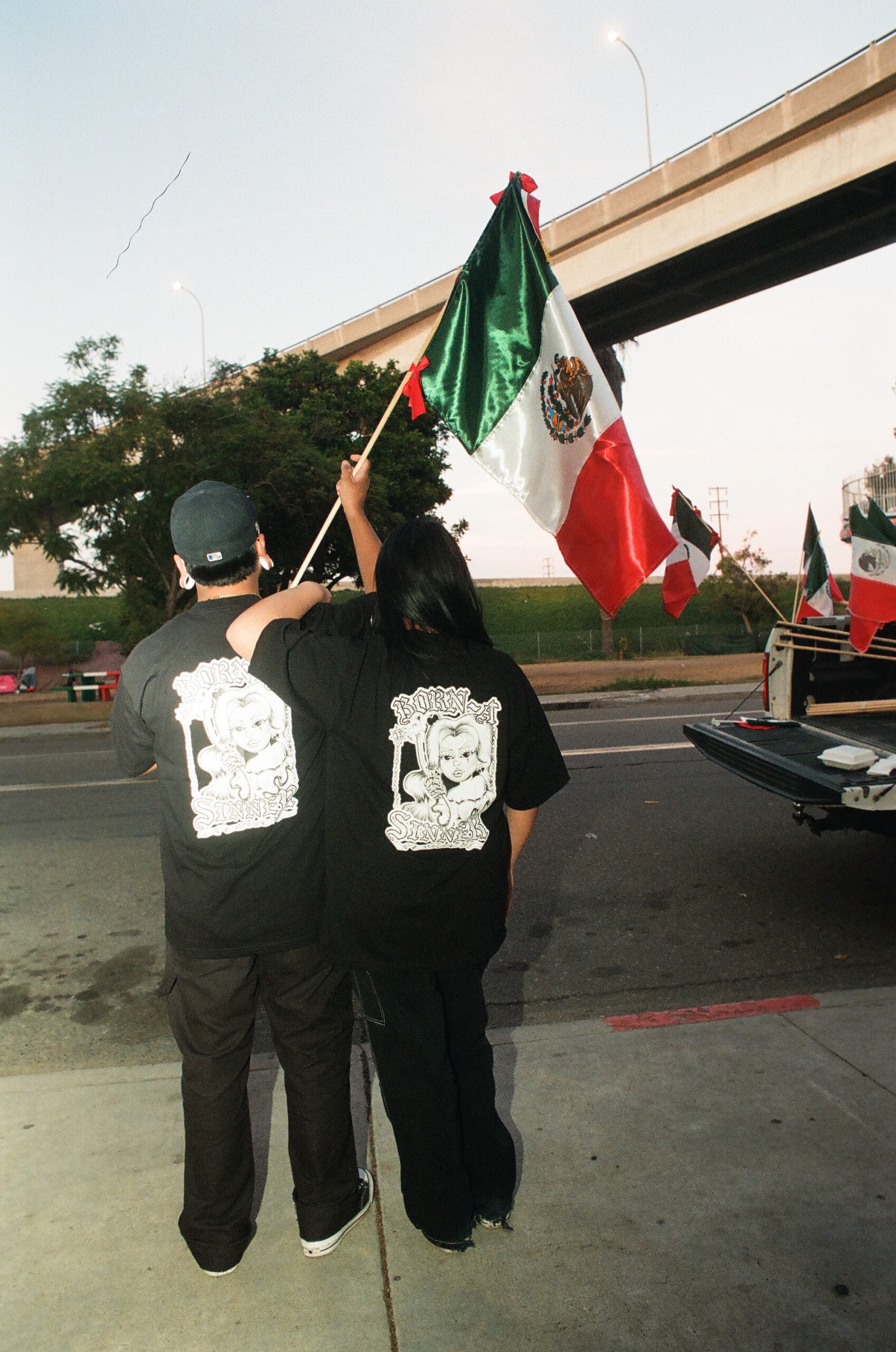


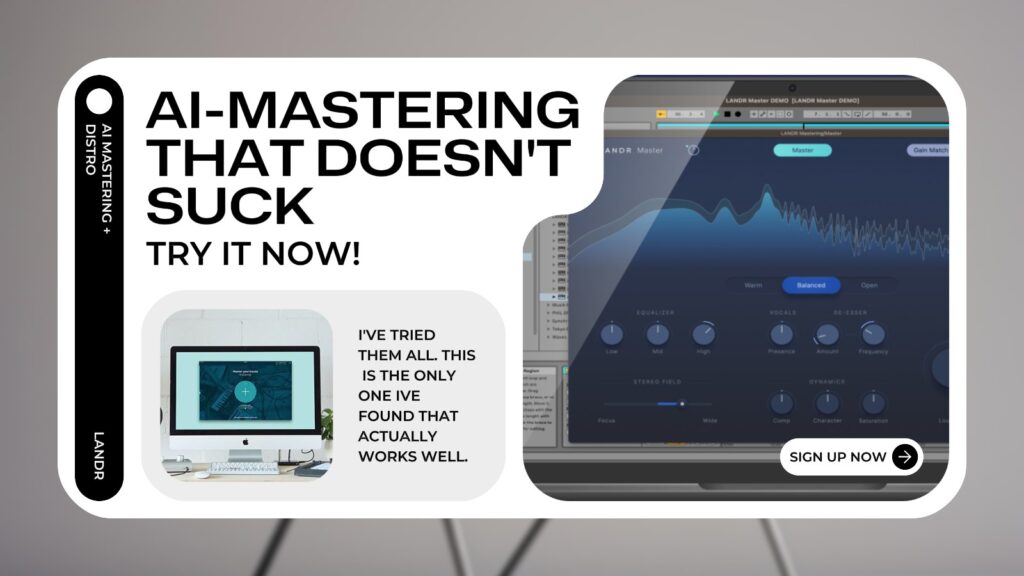


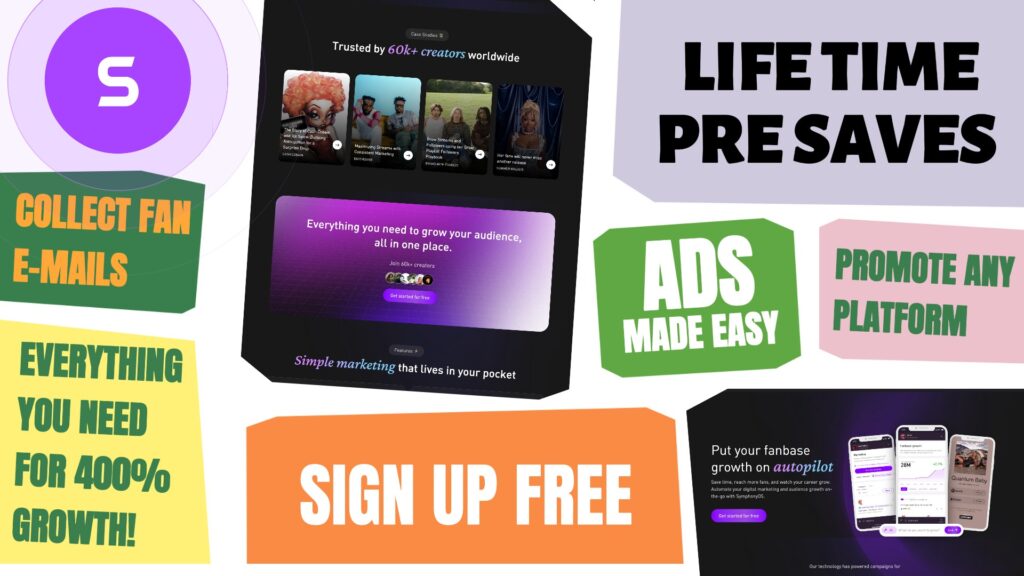
Leave a Reply